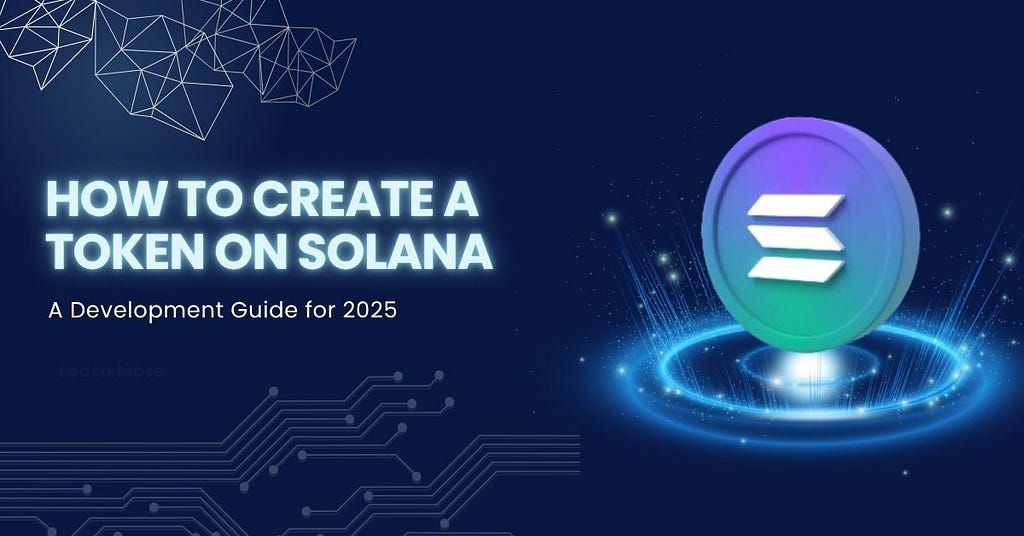
Solana has rapidly become a preferred blockchain platform for businesses and entrepreneurs looking to develop digital tokens. Its high throughput, low transaction fees, and robust developer tools make it an attractive choice for a wide range of tokenization projects, from DeFi assets to loyalty points and gaming tokens. This guide provides a comprehensive, step-by-step explanation of how to create a token on Solana in 2025, tailored for business owners, project managers, and anyone seeking a reliable token development company.
Why Choose Solana for Token Development?
Solana stands out for its impressive transaction speeds and cost efficiency. Unlike many older blockchains, Solana is designed to handle thousands of transactions per second, making it ideal for businesses that require scalability and fast settlement times. Its open-source nature and active developer community further support innovation and integration with a variety of applications.
Understanding the Role of a Token Development Company
For businesses new to blockchain, partnering with a token development company can simplify the process and reduce risk. These companies bring expertise in smart contract development, security, compliance, and user experience. They help translate business goals into technical requirements, design tokenomics, and manage the deployment and maintenance of the token, ensuring a smooth launch and ongoing support.
What Are SPL Tokens?
Solana uses the SPL (Solana Program Library) standard for its tokens, similar to Ethereum’s ERC-20. SPL tokens can represent fungible assets (like cryptocurrencies or loyalty points) or non-fungible assets (NFTs). The SPL standard ensures compatibility with wallets, exchanges, and decentralized applications on the Solana network.
Step-by-Step Guide to Creating a Token on Solana
1. Requirement Analysis and Planning
Start by defining the purpose of your token. Consider the following:
- What business problem will the token solve?
- Who is the target audience?
- What features and functionalities are required?
This foundational step guides all technical and business decisions throughout the project.
2. Choosing the Right Token Standard
Solana supports several token standards, but SPL is the most widely used for fungible tokens. For NFTs or specialized use cases, other standards may be appropriate. The choice of standard affects compatibility, functionality, and integration with other platforms.
3. Designing Tokenomics
Tokenomics refers to the economic structure of the token, including:
- Total supply (fixed or inflationary)
- Distribution mechanisms (ICO, airdrop, staking)
- Utility and governance roles
- Burn or deflationary features
Careful design of tokenomics is crucial for long-term sustainability and user adoption.
4. Setting Up the Development Environment
To begin development, you’ll need:
- Solana CLI (Command Line Interface) for blockchain interactions
- SPL Token CLI for token management
- A secure wallet (e.g., Phantom, Sollet) funded with SOL for transaction fees
Solana Development Services often include environment setup, wallet configuration, and security best practices to protect your assets and private keys.
5. Creating the Mint Account
The mint account is the core identity of your token. It defines:
- Decimal precision (how divisible your token is)
- Mint authority (who can create new tokens)
- Freeze authority (optional; can restrict transfers for compliance)
Use the SPL Token CLI to create the mint account:
spl-token create-token
This command outputs the mint address and sets your wallet as the mint authority by default.
6. Creating Token Accounts
Each wallet that holds your token needs a dedicated token account. Associated Token Accounts (ATA) are recommended for most users, as they link automatically with wallets and simplify management. For custom use cases, manual token accounts can be created.
spl-token create-token
Replace <TOKEN_ADDRESS> with your mint address.
7. Minting the Initial Token Supply
With your mint and token accounts ready, mint the initial supply:
spl-token mint <TOKEN_ADDRESS> <AMOUNT>
This command creates the desired number of tokens and deposits them into your token account.
8. Integrating with Wallets and Applications
To maximize usability, integrate your token with popular Solana wallets and decentralized applications. This step allows users to send, receive, and store your token seamlessly. Integration may involve updating token metadata, verifying your token on explorers, and providing documentation for users.
9. Testing and Auditing
Before launching on the mainnet, conduct thorough testing on Solana’s testnet. Perform audits of your smart contracts to identify and fix vulnerabilities. Testing should cover:
- Transaction flows (minting, transferring, burning)
- Edge cases (invalid transactions, authority changes).
- Security checks (access controls, freeze authority).
This step is critical for ensuring the reliability and security of your token.
10. Deploying to Mainnet
Once testing is complete, deploy your token to the Solana mainnet. This involves:
- Finalizing mint and freeze authorities
- Publishing token metadata
- Announcing the launch to your community
After deployment, your token is live and ready for distribution and public use.
Best Practices for Solana Token Development
- Security First: Protect private keys and use multi-signature wallets for mint and freeze authorities.
- Clear Tokenomics: Transparent supply and distribution rules build user trust.
- Compliance: Consider legal and regulatory requirements, especially for security or utility tokens.
- User Experience: Integrate with leading wallets and provide clear instructions for users.
- Continuous Monitoring: Stay alert for bugs, exploits, or changes in Solana’s ecosystem that may affect your token.
Common Use Cases for Solana Tokens
- DeFi Platforms: Powering decentralized exchanges, lending, and staking protocols
- Loyalty Programs: Issuing reward points for retail or hospitality businesses
- Gaming: In-game currencies, assets, and NFTs
- Fundraising: Initial Coin Offerings (ICOs) or community token launches
- Governance: Voting rights in DAOs and community-driven projects
Frequently Asked Questions
How much SOL do I need to create a token?
You’ll need a small amount of SOL to pay for account creation and transaction fees. The exact amount depends on current network prices but is generally affordable for most businesses.
Can I update the token supply after launch?
Yes, if you retain mint authority, you can mint additional tokens. For fixed supply, revoke or transfer mint authority after the initial minting.
Is it possible to freeze or restrict token transfers?
Yes, by assigning a freeze authority, you can restrict transfers from specific accounts as needed for compliance or business logic.
What programming languages are used for Solana tokens?
Rust is the primary language for developing custom Solana smart contracts, but token creation and management can often be done via CLI tools and JavaScript.
Partnering with a Professional Token Development Company
While it’s possible to create a basic token using Solana’s tools, businesses often benefit from working with experienced professionals. A reputable token development company provides:
- Strategic consulting and requirement analysis
- Custom smart contract development
- Security audits and compliance support
- Integration with wallets and exchanges
- Ongoing maintenance and upgrades
This partnership helps businesses avoid costly mistakes and accelerates time to market.
Why Choose Codezeros for Solana Token Development?
Codezeros is a globally recognized leader in token development, offering comprehensive services for entrepreneurs and organizations worldwide. Our team specializes in designing, developing, and deploying custom tokens that align with your business goals. We support a wide range of token types, including security tokens, utility tokens, NFTs, DeFi tokens, and more.
With extensive blockchain experience, strict adherence to global standards, and a focus on secure token storage and management, Codezeros delivers value and reliability at every stage of your project. Whether you’re launching a new digital asset, building a DeFi platform, or exploring innovative token use cases, our experts are ready to guide you from concept to deployment.
Ready to Launch Your Solana Token?
If you’re looking for a trusted partner to develop your token on Solana, reach out to the experts at Codezeros. Our team will help you navigate every step, from initial planning to successful launch and beyond. Contact us today to discuss your project and discover how our Solana token development services can support your business goals.
Thank you for being a part of the community
Before you go:
- Be sure to clap and follow the writer ️👏️️
- Follow us: X | LinkedIn | YouTube | Newsletter | Podcast | Twitch
- Start your own free AI-powered blog on Differ 🚀
- Join our content creators community on Discord 🧑🏻💻
- For more content, visit plainenglish.io + stackademic.com
How to Create a Token on Solana: A Development Guide for 2025 was originally published in Stackademic on Medium, where people are continuing the conversation by highlighting and responding to this story.







